On December 13th, fans in the U.S. will finally get to open The Roddenberry Vault. We first heard about it at San Diego Comic-Con in July and have been hungry for details ever since. The three-disc collection offers a look at Star Trek the original series we’ve never seen before, which sounds like rhetoric until you get to see it for yourself. They’ve unearthed a warehouse, literally, of bits and pieces of cutting room floor footage, special effects tests, deleted scenes, omitted dialogue, and alternate takes from the show, then put them together in a series of documentaries, all featuring Star Trek stars and guest stars, behind-the-scenes creatives, and other experts.
The discs were put together by Roger Lay, Jr., and Mike and Denise Okuda, who have spent almost a decade curating and assembling the footage, and somehow managed to keep it a secret. We got to chat with Mike and Denise about the joy of discovery and the process of assembling this incredibly exciting collection of unseen footage; turns out they’re just as excited about it as we are.
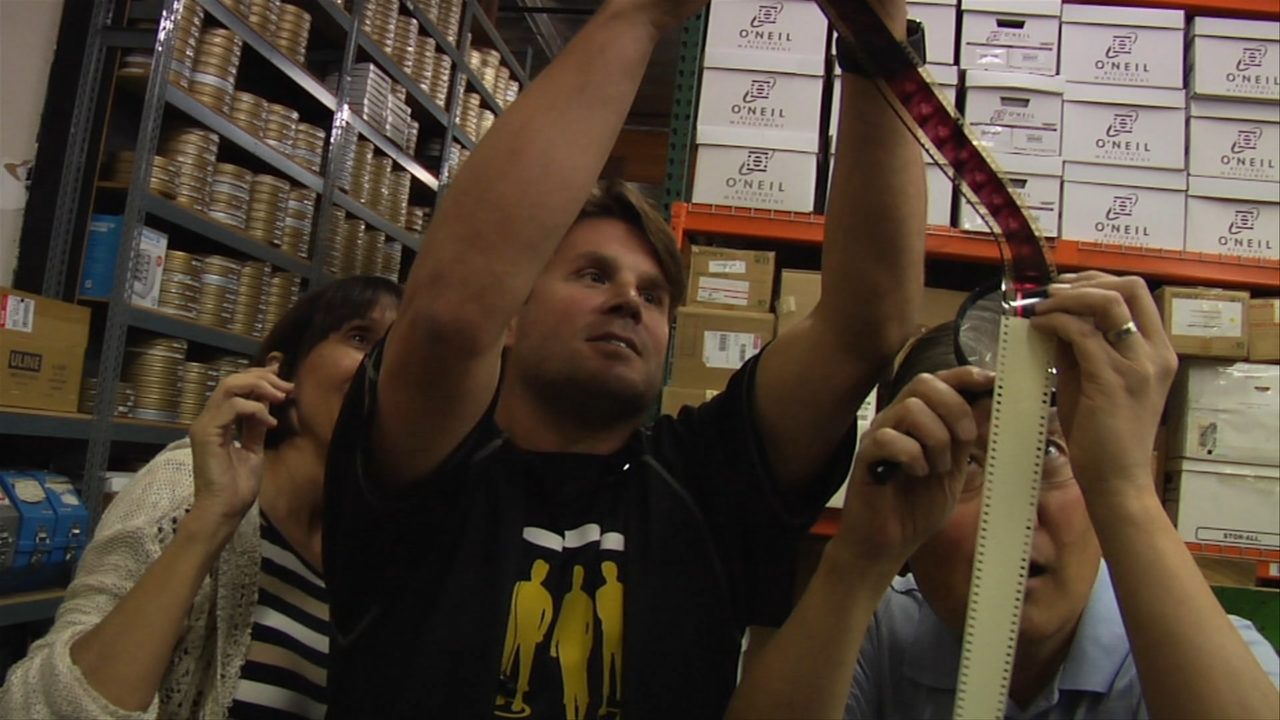
Rod Roddenberry, Mike and Denise Okuda inspect archived film
TREKMOVIE: The Vault is such a present for fans, it’s like that thing you’ve wanted since you were ten years old.
DENISE OKUDA: We’re so glad to hear you say that. Roger Lay Jr., Mike and I worked so hard because we are so excited to share this unseen footage with other people that feel about Star Trek like we do.
TM: Well it shows and that feeling comes across so strongly. I can’t say it rekindles my love of Star Trek because it never went away, but it reignited that fire that was always there.
MIKE OKUDA: I’ll say it did rekindle a certain love … when we were seeing the new footage, for example, of “City on the Edge of Forever,” it just reminded me how much I love that episode, and it did make me want to go back and watch it again.
TM: And watching that footage made me realize that Edith Keeler really was his soulmate in a way that none of the other women were.
DENISE: Absolutely. The omitted dialogue, where she falls down the stairs … oh my god! We saw that, and we came off the couch.
TM: It just really re-triggers everything that made you fall in love with it the first time through. You guys did an incredible job with it. Tell me about the moment when you were first told that all of this existed.
DENISE: Well, that’s nine years ago. We got a call from Rod, “Meet me at this warehouse.” So we drove there, we saw him and he said, “You have to sign these.” They were non-disclosures, saying we wouldn’t tell anybody—we didn’t even tell our parents—what we were about to see. So we go in, and we see rows and rows and rows of film canisters. We don’t know what this is. So we open them up, and there’s these individual rolls of different sizes of film. And there were Star Trek original series episodes written on the outside of the cans, and we’re like, “Oh my gosh. Is this really what we believed was out there but we never had any proof that we saw?” And then they showed us a little bit of it and Mike and I, our jaws dropped. It was unimaginable that we were seeing something from the original series that we had never seen before. And then the journey started: cataloging it, and working to put it in a form where we could present it to other people.
TM: So how long did you have to wait between being in that room and seeing all these film cans, and starting to look at it all?
MIKE: It was a process. Off and on, we would get new things to look at, every few weeks. We spent roughly three years cataloging, which was a huge endeavor.
DENISE: I have to say, though, that the folks at CBS, they stepped up to the plate, big time. And it was a huge, huge job. It was seven days a week for a long time.
MIKE: It’s important to remember that when we started, and frankly, for a large portion of the cataloging of footage, we really didn’t know what we had there. The film material wasn’t organized. As a result, we didn’t really know what we were going to be doing with it until we started meeting with Roger, who’s a very accomplished filmmaker. He was the one who had to figure out how we were going to delve into not just the footage, but the process of the episodes, and find things that hadn’t been talked about or shown before.
TM: What was your methodology for cataloging the footage?
DENISE: Very meticulous and tenacious.
When we got a disc, just like when you get a script, you sit down and you just watch it for entertainment, or for, “What’s on this?” And so we would get the disc, we’d put it in, and we’d just sit on the couch and just watch it. For fun, and a couple of times, like I said, we came off the couch because we were so excited. But for the most part, it was like a river: we would just watch it and let it flow through us.
Then we would record each individual segment. We had a very detailed spreadsheet with the in time, the out time, the total time, what set, who was in it, why is it significant … and we did that for many discs. It took, off and on, three years. We’ve got this huge notebook of all of this research—I mean, we treated it like a research project.
And then once we had it all, like Mike said: What do you do with it? So that’s when Roger Lay came in, and we decided that we would present the footage and give it context, in documentaries. And we set out to talk to folks that had actually worked on the original series.
TM: Can you describe a moment when you watched a specific piece of footage and thought “I can’t believe we’re really seeing this!”
DENISE: Oh, there were a few! There’s something that we call ‘a fly on the wall,’ where you’re standing behind the camera, and you’re watching production. And because Mike and I worked on production on the other incarnations of Star Trek, we’ve been there before. But we’ve never been on THOSE sets before. The time in “[The] Trouble with Tribbles,” where Kirk and Spock are standing on the transporter, and the special effects guys come with the tribbles, the ones that have the robotics inside of them and they turn them on and they place them at the feet of the actors … that was wild. That was like being there. But I think one of the things that was really exciting was the Peter Kirk footage at the end of “Operation — Annihilate!” We had seen stills, we knew that it was filmed, but we had no idea it was going to be in this lost footage.
TM: So with all the Trek knowledge that you guys have, what surprised you the most?
MICHAEL: There were several things that were really quite surprising. We were surprised to find compelling evidence that there was an alternate ending to the episode “Who Mourns For Adonais?” where we would have learned that Lt. Carolyn Palamas was pregnant with Apollo’s child. We knew it was written; it was quite a revelation to know that yes, it was filmed.
During one of our interviews, we were lucky enough to get visual effects legend Richard Edlund. You probably know his work through the original incarnation of ILM; he shot the original Star Wars crawl and the Imperial Star Destroyer. But early in his career he worked for a company called The Joseph Westheimer Company, which is one of the major contributors of optical effects to the original series. And it turns out that this visual effects legend was the man who actually hand-lettered the words “Star Trek” for the main title sequence.
TM: As a designer especially, it must have been kind of thrilling.
MICHAEL: For a designer, that was very exciting. As a special effects geek, I was fascinated to see several brief but interesting clips to show how they tested the warp engines spinning effect on the Enterprise model. There were several shots of the model that were never used. To get to see the Enterprise flying differently was just a delight.
TM: That was spectacular to watch. The funny thing about that scene at the end of “Who Mourns For Adonais?” though is that having read the Blish book a hundred times as a kid, I thought I’d actually watched that scene. I remembered what it looked like. I thought I did!
MIKE: That didn’t happen to me there, but there was a scene in “Devil in the Dark” where Denise is like, “Oh my god, oh my god!” And I’m going, “Yeah, okay.” Because I remembered the Blish book as well, and thought I’d seen it. And Denise–
DENISE: And I said, “No no no! We’ve never seen this, this is an omitted scene.” So yeah, occasionally we would hearken onto the Blish books, but it’s one of those things that if we had any doubt, we would go back to the episodes and make sure.
MIKE: Yeah, we kept all the episodes on the computer so we could just skim through them if needed.
DENISE: And the scene itself isn’t really an “oh my god” scene, it’s “oh my god we’ve never seen this before.” When you’re so used to hearing the words from the episode and all of a sudden you’re hearing words you’ve never heard before? THAT’S what’s so exciting, that’s the “oh my god.” And we experienced that by just … maybe there’s just two lines of dialogue, like “City of the Edge of Forever.”. We’ve never heard them before! These were work prints that were supposed to be thrown in the trash, and they were rescued. And now, almost 50 years later, we’re able to see it. What a gift.
MICHAEL: There’s a wonderful moment in “Conscience of the King” where Kirk and Lenore Karidian are walking through the observation deck and they’re sort of putting the moves on each other. And it’s kind of a lovely scene in the original, but there’s additional footage where they continue their banter, and you could see these two people who are intrigued with each other, but they’re also trying to manipulate each other, and it’s sweet and it’s creepy at the same time. And it just adds a layer of complexity onto the episode.
TM: Of all the things that you’ve found, what would you each say is your favorite discovery?
DENISE: Oh, it’s hard to pick a favorite. Probably the omitted dialogue from “City on the Edge of Forever.” It was so sweet, and like you said before that it made you feel like they had truly found their soulmate, it was just very special and so that was very meaningful. But then again, there were other things. The Peter Kirk footage and the “Who Mourns for Adonais?” and the alternate take in “Doomsday Machine!” When Matt Decker is giving that famous speech, “it was there, they’re not anymore,” that’s a different take.
MIKE: It’s a different interpretation.
TM: And Mike, do you feel that those are also your favorites?
MIKE: I think I’m going to have to go with that “City” scene for my favorite as well. I’d certainly give a shout-out to … there’s a fascinating alternate ending to that episode “Return to Tomorrow.” It’s kind of goofy, it’s kind of silly, and you can absolutely see why it was cut because the ending that they did use is so powerful, anything after it is anti-climactic. But it’s kind of sweet and it’s kind of goofy, and it’s a delight to see. I wouldn’t put it back, but I love to see it.
TM: That’s how I felt about a lot of it: “Oh that’s why they cut it!”
DENISE: Yeah. We think of this missing footage and alternate takes as icing on the cake. This is just special stuff, and if you know Star Trek extremely well, you’re going to be delighted and you’re going to know right away. And if you have a passing familiarity with it, then we’re going to give you context. And so hopefully there’ll be something for everybody.
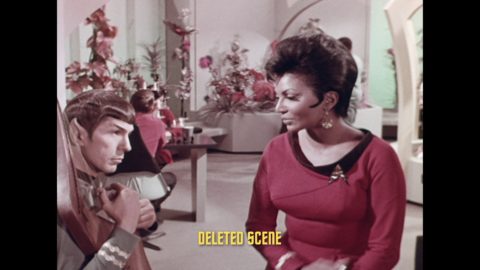
TM: All the interviews on the discs are so compelling. Were you there for those?
DENISE: Yes! Roger Lay, Jr. conducted most of the interviews, Mike conducted some of them, but we were there for most of the interviews.
MIKE: Roger’s a great interviewer, he knows almost all of the behind-the-scenes materials that have been shot before, and he’s fascinated by the filmmaking process, he’s fascinated by the show, so he really tries to get people to talk about things that they haven’t talked about before. [In] the Bill Shatner interview material, he opened up about his process, his feelings when his father died, more than I’ve ever seen him.
DENISE: Yeah, that was an amazing interview. Bill Shatner was so gracious with his time and with his honesty. It blew us away, and we’ve worked with Bill on feature films and have known him for years, in a working capacity, and it really was special.
TM: There were two things that he said that really struck me. One was when he described his acting style of being “in the moment,” which is such a big part of what made Captain Kirk so great. And when he talked about watching the first pilot, which I’d never heard him talk about.
DENISE: We’ve never heard him talk about it either. We were just sitting there, absolutely fascinated, because it was such an honest and giving interview.
TM: So of all the guest stars and behind the scenes people that you got, which did you think turned out to be the most exciting interviews?
MIKE: There were so many. D.C. Fontana gave us a lot of amazing background, and of course it was fun to go on the journey of “The Trouble with Tribbles” with David Gerrold.
I loved talking to Richard Edlund, visual effects genius. And so many cast members, we were just thrilled to talk to them.
DENISE: We spoke to Mike Forest, who played the Greek god Apollo, and Leslie Parrish who played Carolyn Palamas. I have to tell you my favorite, though. My favorite episode is “Metamorphosis,” and we chose “Metamorphosis” as one of the 12 episodes on the disc because we had some really amazing footage and we wanted to use that. And we flew up to northern California and we interviewed 92 year-old Ralph Senensky, the director of that episode. He directed seven other Star Trek episodes including “This Side of Paradise.” And he was amazing! He’s 92 years old and his memory is sharper than mine. He could tell you specific days—“oh yeah, we shot that on a Tuesday,” and “the sun was going down, and it was mostly on a planet…” And then we interviewed Elinor Donahue, who played Nancy Hedford. And she was wonderful. She was just a nice person and opened up and really enjoyed talking to us about that episode. So those two are my favorites.
TM: And then interviewing Leslie Parrish—she’s a fascinating person, she has a very interesting history. Did she talk about any of that? Because she was an activist, and coined a famous anti-war phrase…
DENISE: Yes!
MIKE: We didn’t get to include as much of that kind of material as we wanted to, but yes, she’s a lovely person. We flew up to her home and she gave us an entire afternoon, and just to hear her talking about working with Michael Forest, and her feelings toward the character and toward Apollo … it’s fascinating to see that after all these years, it still made a mark on her.
TM: I think it speaks to the power of the show that for the guest stars who were there for one episode, it’s still such a strong memory after 50 years.
MIKE: And it’s not just her love of that one episode. But she loved the idea of Star Trek and that very much endeared her to us.
DENISE: It’s really interesting: she’s a futurist. And she was a futurist back then, and she was telling us how she was really depressed about the state of our world right now, particularly in the United States, in politics and so forth, and we said, “Well you know what? We hear what you’re saying, however, Star Trek gives us hope and it’s not just the television series. I mean, what other television series has a philosophy that speaks of a common good and a common people and that we should all be kind to each other and we should all be interested and reach out?” And I gotta tell you, when we left the house, she actually thanked us. She said, “You know, I was feeling really depressed, but now, when you talk about Star Trek and you talk about the project that you’re doing, and the people that you’re going to be reaching, it really made me feel better.” And of course that made US feel better.
TM: I think that’s happening to fans, especially after the election, as everybody watches what’s happening next unfold, everybody’s going back to the show, because it does give that sense of hope. If enough people feel this way, the maybe there’s hope.
MIKE: Well you have to remember that back in the 1960s, it was a very unsettling time. And Star Trek’s message of hope, I think helped people realize that yeah, you really should remain optimistic and you really should work for the future. And that message is clearly as important now as it was then.
TM: Agreed. And Clint Howard, you also interviewed? I’d read somewhere that you said he was particularly engaging.
DENISE: (laughs) Yeah, he was great!
MIKE: He was a crack-up.
DENISE: And did you see those photos of him, those home photos that he lent to us to include in The Vault of him in make-up standing on the bridge and having the bald cap put on him by Fred Phillips, aren’t those amazing?
TM: So of course everybody’s asking, and I keep hearing no, but I have to ask too: is there anything else? Anything left that can come out in a different format, somewhere?
MIKE: Well, we used a relatively small fraction of the material, but frankly, we really did use the best. We didn’t say let’s make sure we hold some stuff back, we put the best footage—
DENISE: We wanted to put the best stuff—I mean, there was a lot of stuff that was interesting, but not that interesting. It was almost what you saw in the aired episode, or too short. So what we did is we said, “This is for the 50th anniversary, let’s make this the best we possibly can.” We put all the good stuff in here. So all of us are at peace. We feel good about it, we were excited about it, but I think this is it, I really do. I mean, you never say never to anything, but as far as Mike and Roger and I are concerned, this is it.
TM: Not complaining! Even when you just watch the clip of someone yelling offstage “Left! Right” and the crew leaning to one side and then the other, stuff like that is such a gem for us to see…
MIKE: You know what made us crack up? It was when they talked to the Enterprise computer, and the director or script supervisor off screen would go—
DENISE: “Hum hum click click!”
(laughter)
TM: And there were so many moments when you’d hear someone reading lines off screen to the actors, and it’s like when all of us read “The Making of Star Trek,” and learned so much about not just Star Trek but making TV. I think what you’ve included here teaches you something about making TV, even though it’s old. I know you guys know how to make TV, but did you get a sense of that too?
DENISE: That’s exactly–that’s another aspect of The Roddenberry Vault; it does take you back and it shows you 1960s television, and television production. And we of course love “The Making of Star Trek” as well. It’s just another aspect that hopefully people will enjoy.
TM: Do you think that there’s a place for the bits and pieces that didn’t make it in there, that don’t have context, maybe online? Stuff that fans like you and like us would just love to see?
MIKE: Honestly, we’re just coming off the project. We’re exhausted, and I don’t really want to plan anything like that.
TM: And the Encyclopedia too.
MIKE: Oh THAT whole thing.
DENISE: Yeah, we’ve been kind of busy.
TM: You’ve been working on this for so many years, you signed your NDAs, but how hard was it to keep it a secret this whole time? What was that like?
DENISE: Really hard! Especially when you’re going to conventions and you’re so excited and you just saw something and there’s somebody standing in front of you and you just want to tell them so desperately. But of course, we couldn’t. So it was hard. But we had people to talk to. We had the folks at CBS and we had Roger. Roger and Mike and I would gab about this stuff all the time. So it wasn’t like we were in a vacuum. But it was very nice when we could finally go and tell people. And now that it’s coming out we can really talk to people, so it’s great fun for us.
TM: It must be. It’s everybody’s dream project. Thanks for creating this beautiful piece of work.
DENISE: We’re delighted that you like it and we hope that many other Star Trek fans will also like it.
TM: They will!
Support TrekMovie by ordering The Roddenberry Vault through the link below:

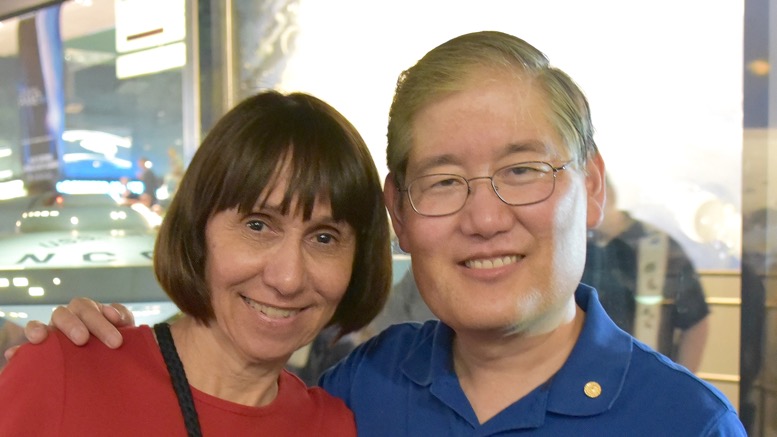
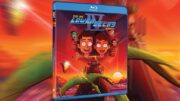
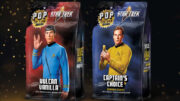
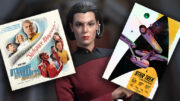
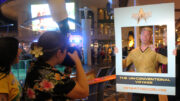
Where is the link to order this via TrekMovie?
https://www.amazon.com/Star-Trek-Original-Roddenberry-Blu-ray/dp/B01LFUORW0/ref=as_sl_pc_as_ss_li_til?tag=trekmocom02-20&linkCode=w00&linkId=00e5c056669eab0eff634882e76ee24d&creativeASIN=B01LFUORW0
That was a very interesting article. Thanks for sharing that.
So they found this footage that the director (for whatever reason)
decided to leave on the cutting room floor. This footage never aired on NBC in
the 60’s.
I guess we have to think of this as a Easter Egg or more timely, Christmas
present to the fans…but I would add that since it didn’t air on NBC, any of
these nice treats are not going to be considered part of the canon of “Star Trek”
But this may be a good time to ask this question, kind of related. When
they remastered “Star Trek” to air on TV 10 years ago or so, I noticed that some
tiny snips of original footage seemed to have been edited. For instance, that
classic scene where Cyrano Jones has to clean up the space station in “The Trouble with Tribbles”. I seem to remember seeing this on TV since the remastering and the very enjoyable scene is cut by a few seconds.
If I buy the Blu-Rays of the entire series, will I really get all the footage that aired on NBC or are there still some cuts in those episodes. Thanks to anyone who could answer this for me.
Steve Gennarelli,
Re: since it didn’t air on NBC, any of
these nice treats are not going to be considered part of the canon of “Star Trek”
Hmmm..I don’t know. The memos of the NBC censor, Jean Messerschmidt, seem cataloged. I could definitely see an appeal for a STAR TREK *uncensored* edition restoring cuts dictated only by the capriciousness of that department.
Excellent. I’m hoping Santa puts one under the tree for all of us that want this..
I love, love, love it that we’re getting new TOS footage, but I wish we were getting that footage in another format. I’ve already read a ton of material about Star Trek; what I really want is to simply SEE the new footage, without anybody babbling at me and telling me what I’m supposed to think about it. I’m happy to watch the documentary, too, but I wish we’d gotten the new footage plain.
Disc 3 has a great selection of different clips with no intro, no talking, no contexting…just a string of clips. You’ll love it.
That’s great to hear; thanks for that information!
Excellent interview Laurie, congrats. This is a very special 50th anniversary present to the fans.
http://www.cityweekly.net/TheDailyFeed/archives/2016/12/13/the-pipeline-paramount-finally-cracks-open-the-roddenberry-vault-for-blu-ray
some deleted scenes (some of which are on the set):
LLAP
Sorry, the 2nd link of some deleted scenes was:
http://memory-alpha.wikia.com/wiki/Deleted_scene
Can’t wait for this. I’ll be glued to the TV Christmas Day. Although it does disappoint me somewhat to read: “I mean, there was a lot of stuff that was interesting, but not that interesting.” Well, maybe not so interesting to the Okudas, who got to live and breathe this stuff for however many years, but what about the rest of us poor slobs?? My hope is if this one sells well enough we’ll see a Volume Two, and I’ll be there first in line to buy it.
After reading this great article I was inspired to visit Amazon to look at the product. It’s labeled “Star Trek: The Original Series”. So I’m going to speculate that in year’s to come…they can release new footage from “Star Trek: TNG”, “ST: Deep Space Nine” and the other series too if there’s a demand for it. They can all be released under title “The Roddenberry Vault” presents…..smart decision for Paramount to make us much cash as they can while delighting the fans at the same time.
http://io9.gizmodo.com/denise-and-michael-okuda-on-releasing-new-star-trek-foo-1790016432
Scott Mantz needs to cut back on the tanning beds. He’s starting to look like an eggplant
Nice interview thanks, getting this as a Christmas gift 🎁 be hard not to just open this and leave the other gifts to later lol
I hope they join Star Trek Discovery.
Shame they cannot get Paramount to pay to do the same for the TOS movies there must be plenty of unseen stuff on those somewhere which should have been included in the TOS movie blurays (if Paramount could have been bothered to do anything, something for the 50th anniversary!).
Can’t wait for this Awesome disk! Thanks Mike and Denise for helping get this put together. Why Richard Arnold was interviewed AGAIN about events that he was never a part of is beyond me. The guy has made a meager living out of talking about ‘Gene and Star Trek’ like he was there during the original shows run – he was not and half the time his information is wrong.
I’ve been combing through James Blish’s adaptation of “The Devil in the Dark” in “Star Trek 4” to find the deleted scene that so excited the Okudas. In the aired episode, Kirk, Spock and McCoy remain on Janus 6 the entire time. In Blish’s adaptation, there’s a scene where they beam up to the Enterprise for a conference and first stumble on the idea that the “killer” may be a silicon-based life form. Perhaps this was actually filmed but cut. Can’t wait to find out.
This is phenomenal!!! I am definitely buying a copy of this. Well done, CBS.